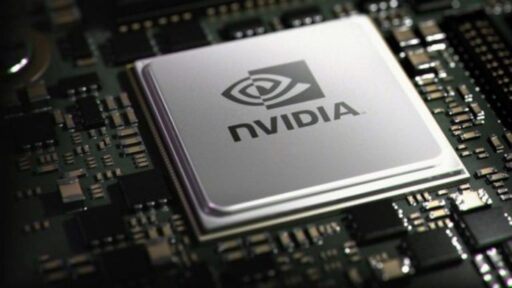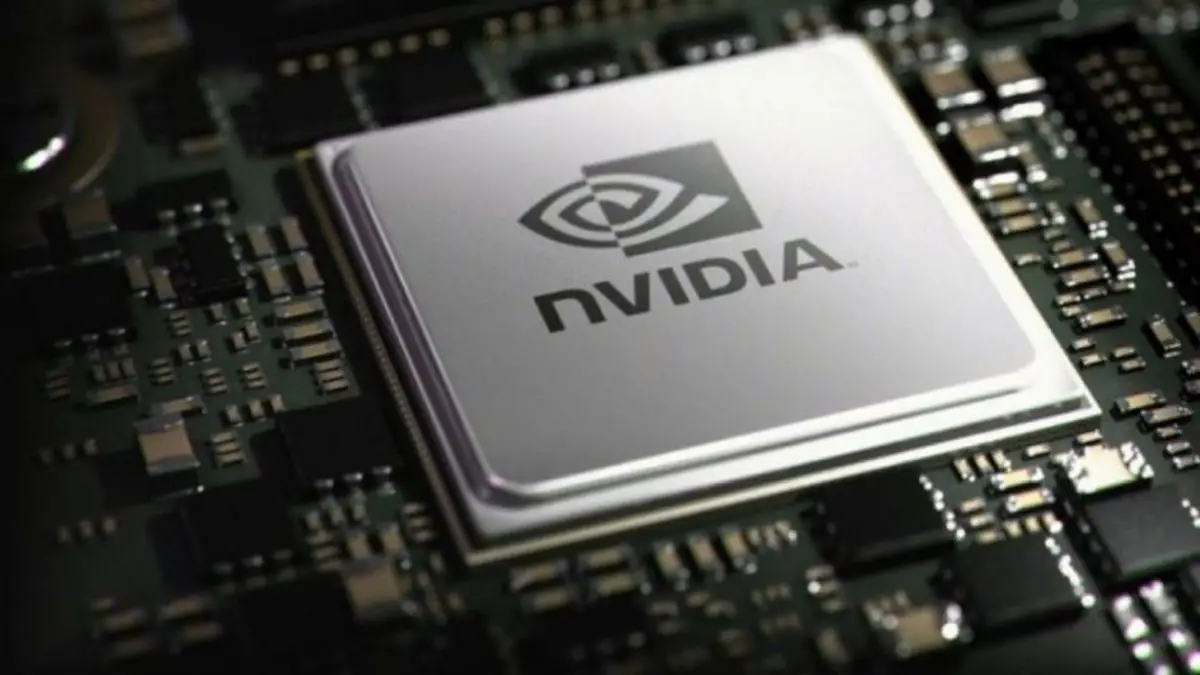As the crypto mining industry evolves, maximizing profits has become a complex task that requires a blend of economic understanding, hardware optimization, and strategic software and pool selection. This article delves into the various aspects of optimizing your GPU setup for crypto mining, from the initial investment to the cutting-edge FPGA technology, providing you with insights to enhance performance and profitability in this competitive space.
Key Takeaways
- Calculating profitability is a critical first step that involves assessing hardware and electricity costs against potential earnings from mined cryptocurrency.
- Optimizing hardware through overclocking and effective cooling systems can significantly increase mining efficiency and prolong equipment lifespan.
- Choosing the right mining software and joining a mining pool can optimize earnings and provide real-time data for performance adjustments.
- Energy-efficient mining equipment and cost-saving electricity practices are essential for reducing operational expenses and maximizing profit margins.
- The emergence of FPGA miners presents a new avenue for mining, potentially offering a balance between efficiency and profitability compared to traditional GPU mining.
Understanding the Economics of Crypto Mining

Assessing Initial Investment Costs
When venturing into the realm of crypto mining, a thorough assessment of the initial investment costs is crucial for setting the stage for profitability. The cost of equipment is often the most substantial outlay, encompassing the purchase of high-performance mining hardware. For instance, ASIC miners, which are prevalent in the industry, can range from $2,000 to $15,000 USD, representing a significant financial commitment.
In addition to hardware, prospective miners must account for ancillary expenses such as cooling systems, power supply units, and potentially, the cost of a dedicated mining space. To aid in this financial planning, a variety of online calculators are available, including WhatToMine and CryptoCompare. These tools provide estimations of potential profits by considering factors like hardware efficiency, electricity costs, and the current market conditions.
While the initial investment can be daunting, understanding and planning for these costs is the first step towards a profitable mining operation.
It’s also important to recognize that the profitability of mining is not static; it is influenced by variables such as network difficulty, electricity prices, and the volatile nature of cryptocurrency markets. Therefore, continuous monitoring and adjustment of your mining strategy are imperative to remain competitive.
Estimating Ongoing Operational Expenses
To maintain a profitable crypto mining operation, it’s crucial to estimate ongoing operational expenses accurately. Operational costs can fluctuate significantly, influenced by factors such as electricity rates, hardware maintenance, and network fees. A detailed understanding of these expenses is vital for sustaining long-term mining activities.
- Electricity costs: Often the largest recurring expense, varying by location.
- Hardware maintenance: Includes repairs and replacements to keep mining rigs running optimally.
- Cooling systems: Necessary to prevent overheating, which can lead to hardware failure.
- Network fees: Transaction fees that may be incurred when transferring mined coins.
By regularly reviewing and adjusting for these expenses, miners can ensure they remain competitive and profitable in the dynamic landscape of crypto mining.
It’s also important to consider the depreciation of mining equipment over time and potential costs associated with scaling up operations. Keeping a close eye on these variables will help in making informed decisions to optimize profitability.
Projecting Revenue and Calculating Profit Margins
To ensure the success of your crypto mining venture, accurate projection of revenue and calculation of profit margins are crucial. Efficient crypto mining requires proper power supply, cooling, and hardware selection. Utilizing online mining calculators is a recommended step for estimating profitability before commencing operations. These tools consider the cost of your hardware, electricity, and the current value of the cryptocurrency you’re mining.
By inputting specific details about your mining setup into these calculators, you can obtain a tailored estimate of your potential earnings. This foresight allows for strategic planning and informed decision-making.
Here’s a simplified example of how to calculate mining profitability:
| Cost Factor | Description | Amount (USD) |
|---|---|---|
| Hardware | Initial cost of GPUs and other equipment | $2,000 |
| Electricity | Monthly cost of power supply | $300 |
| Revenue | Estimated monthly earnings from mining | $800 |
Note: The above table is for illustrative purposes only and does not represent actual data.
After acquiring the essential hardware for a successful mining operation, it’s important to continuously monitor the market conditions and adjust your strategies accordingly. This dynamic approach can help in maintaining profitability despite the volatile nature of cryptocurrency markets.
Optimizing Hardware for Enhanced Performance

Overclocking GPUs for Maximum Efficiency
Overclocking your GPU can significantly boost its mining performance, often leading to a higher hash rate and, consequently, increased earnings. Careful tuning of the GPU’s core clock and memory clock is essential to achieve the best balance between performance and stability. Here are some general steps to overclock your GPU for mining:
- Identify the baseline performance of your GPU.
- Gradually increase the core clock speed while monitoring stability and temperature.
- Adjust the memory clock speed to optimize mining efficiency.
- Continuously monitor the system for any signs of instability or overheating.
Overclocking can lead to higher power consumption, so it’s important to consider the potential increase in operational costs against the expected rise in mining revenue.
It’s also crucial to be aware of the resources available to assist in this process. Websites like Hashrate.no provide valuable insights, including overclock examples and earnings estimates for a wide range of GPUs, helping miners make informed decisions about their setups.
Cooling Solutions to Prolong Hardware Lifespan
An efficient cooling system is critical for the longevity and performance of mining hardware. Overheating not only reduces efficiency but can also lead to hardware failure. State-of-the-art cooling technologies, such as liquid cooling systems, can significantly alter the mining landscape by providing superior temperature management.
Regular inspection and maintenance of the cooling system are essential. Ensure all fans are operational and components are free from dust to maintain optimal air circulation.
Incorporating cooling solutions that do not compromise mining performance is a strategic move. By optimizing hardware cooling, the operational life of expensive mining equipment is extended, which in turn, increases revenue. Staying agile with real-time mining performance data ensures that you are always mining at peak efficiency, maximizing your investment return.
Here are some practical steps to prevent hardware overheating:
- Position the mining rig to lower ambient temperature
- Improve air circulation around the device
- Regularly clean and inspect fans and components
- Consider advanced cooling solutions like liquid cooling systems
Evaluating the Shift from CPU to GPU Mining
The transition from CPU to GPU mining has been a game-changer in the crypto mining industry. GPUs have revolutionized the mining process by offering unparalleled speed and efficiency. For instance, a single GPU can deliver a hash rate of 40 mh/s, dwarfing the 20 kh/s output of a typical CPU by a factor of 2,000. This capability allows miners to execute multiple operations in parallel, a feat that CPUs are ill-equipped to handle.
Despite their advantages, GPUs face challenges such as global shortages, which have led to a reliance on outsourced GPU power and limited access for many users. The focus on single-token mining has also resulted in missed opportunities for diversifying mining activities.
The landscape of cryptocurrency mining is constantly evolving, with hardware advancements and algorithm changes shaping the strategies of miners. The shift to GPU mining has been pivotal, but it is essential to stay informed about the potential impact of events like Ethereum’s move to Proof of Stake on GPU mining’s viability.
While GPUs have been dominant in mining, their reign in Bitcoin mining was short-lived, as ASIC miners took over by 2015. However, GPUs remain versatile, supporting the mining of various cryptocurrencies and adapting to different blockchains and algorithms.
Software and Mining Pool Considerations

Choosing the Right Mining Software
Selecting the appropriate mining software is a critical step in establishing a profitable crypto mining operation. The right software can significantly influence your mining efficiency and profitability. Mining software like CGMiner and BFGMiner are popular choices due to their open-source nature and robust feature sets, allowing for detailed control and real-time monitoring of mining activities.
Mining software should be data-driven and customizable to ensure energy-efficient performance. Upgrading to the latest firmware versions is essential for maintaining peak performance. Regular monitoring and parameter adjustments are necessary to optimize hashrate and maximize profits.
It is truly a practical exploration instead of superficial mining, and by understanding the situation more clearly, you can exploit it efficiently.
Here are some key considerations when choosing mining software:
- Compatibility with your mining hardware
- User-friendly interface for ease of use
- Real-time data on hash rate, temperature, and power usage
- Custom script support for automated optimization
- Reliable and sustainable operation, as highlighted by sources like TokenTax
The Benefits of Joining a Mining Pool
Joining a mining pool can significantly enhance your crypto mining efforts. By collaborating with other miners and combining computational resources, the chances of successfully validating transactions and earning rewards increase. This collective approach can lead to more consistent and frequent payouts compared to solo mining.
Mining pools offer various payout schemes to suit different miner preferences. Here’s a brief overview of common payout types:
- PPS (Pay Per Share): A fixed amount paid per share submitted, providing a predictable income.
- PPLNS (Pay Per Last N Shares): Payment based on the last set of shares, factoring in luck and timing.
- Score-based: A system that weighs the time and difficulty of shares submitted.
By carefully selecting a mining pool that aligns with your mining strategy and risk tolerance, you can optimize your earnings and reduce the unpredictability of solo mining.
It’s important to consider the pool’s fee structure, server location, and reputation before joining. A well-chosen mining pool not only offers financial benefits but also provides a community and support network, which can be invaluable, especially for newcomers to the mining scene.
Real-Time Monitoring and Performance Adjustments
In the dynamic world of crypto mining, real-time monitoring is a critical component that ensures your operation is always at peak performance. By utilizing advanced hardware management software, miners can automatically adjust power usage and clock cycle speeds based on real-time data. This proactive approach not only enhances efficiency but also significantly boosts profitability.
The ability to adapt quickly to mining performance data in real time is your assurance of mining with optimal efficiency, securing the highest returns on your investment.
Effective performance adjustments are not just about tweaking settings; they’re about understanding and responding to the miner’s condition. Custom scripts can be set to monitor thresholds, triggering specific presets that optimize the mining rig’s operation. These adjustments are not merely incremental improvements; they are profitability multipliers that extend the operational life of your expensive mining equipment.
Here’s a quick overview of the benefits of real-time monitoring and performance adjustments:
- Automated optimization of power and clock settings
- Prolonged hardware lifespan through timely interventions
- Enhanced profitability by maintaining optimal mining conditions
- Agile response to fluctuating mining performance metrics
Energy Efficiency and Cost Reduction Strategies
Selecting Energy-Efficient Mining Equipment
In the pursuit of maximizing crypto mining profits, selecting energy-efficient mining equipment is a pivotal step. High-performance rigs that consume less power can significantly reduce electricity bills, which are a major component of ongoing operational expenses.
When evaluating mining rigs, consider two key factors: the hash rate and the energy consumption. The hash rate, measured in hashes per second (h/s), indicates the machine’s ability to process mining transactions. Meanwhile, energy efficiency, often expressed in hashes per kilowatt-hour (h/kWh), is equally important as it directly affects your bottom line.
By prioritizing energy efficiency, miners can ensure that their operations remain sustainable and profitable in the long term, even as the complexity of mining algorithms increases.
Here’s a simplified comparison of two hypothetical mining rigs:
| Mining Rig | Hash Rate (h/s) | Power Usage (W) | Efficiency (h/kWh) |
|---|---|---|---|
| Rig A | 60 TH/s | 3000 | 20 h/kWh |
| Rig B | 50 TH/s | 2000 | 25 h/kWh |
Although Rig A has a higher hash rate, Rig B is more energy-efficient, offering a better hash rate per unit of energy consumed. This makes Rig B a more cost-effective choice in the long run.
Implementing Cost-Saving Electricity Practices
In the quest to maximize crypto mining profits, implementing cost-saving electricity practices is crucial. By optimizing energy efficiency, miners can significantly reduce operational costs and enhance profitability.
One effective strategy is the utilization of renewable energy sources. Solar and wind power, not only contribute to environmental sustainability but also offer a reduction in electricity bills. Transitioning to green energy can transform the financial landscape of mining operations from a cost burden to a profit center.
- Use energy-efficient mining equipment
- Schedule mining during off-peak electricity hours
- Implement smart energy management systems
Encouraging the effective application of these strategies can turn electricity into a significant profit-making factor.
It’s also important to consider the long-term benefits of these practices over temporary fixes. A well-optimized mining setup, including hardware and software adjustments, can lead to substantial savings. Moreover, establishing a good relationship with power providers can save time and additional costs in the long run.
Exploring Proof-of-Stake as an Alternative
The evolution of blockchain technology has introduced Proof-of-Stake (PoS) as a compelling alternative to the traditional Proof-of-Work (PoW) consensus mechanism. PoS networks offer a more energy-efficient approach to maintaining blockchain integrity, without the extensive computational work required by PoW systems.
In PoS, validators are chosen to create new blocks and confirm transactions based on the number of coins they hold and are willing to ‘stake’ as collateral. This shift not only reduces the environmental impact but also opens up new avenues for participants to earn rewards through staking.
While the transition to PoS can be complex, it represents a significant step towards sustainable and cost-efficient blockchain operations. The move by Ethereum to a PoS system underscores the potential for reduced operational costs and a lower carbon footprint.
Renewable energy sources like wind, solar, hydropower, and geothermal are key in crypto mining’s shift to energy-efficient practices, enhancing sustainability and profitability in mining operations. As the industry continues to adapt, the role of mining equipment may evolve, with a possible decrease in demand for power-intensive hardware.
The Future of Crypto Mining with FPGA Miners

Understanding FPGA Technology in Mining
Field-Programmable Gate Arrays (FPGAs) are gaining traction in the crypto mining industry due to their unique blend of efficiency and adaptability. Unlike ASIC miners that are tailored for a specific algorithm, FPGAs can be reprogrammed to mine different cryptocurrencies, providing miners with the flexibility to adapt to changes in coin popularity and pool profitability.
The cost and performance of FPGA miners can vary significantly, with some capable of achieving over 20 gigahashes per second. This performance, coupled with the ability to diversify mining portfolio, makes FPGAs a versatile choice for miners who are willing to navigate the technical complexities involved in their setup and optimization.
While the initial investment in FPGA mining may be higher than other solutions, the long-term benefits of their reprogrammability and speed can lead to increased profitability for dedicated miners.
Despite the potential advantages, the complexity of configuring and optimizing FPGAs should not be underestimated. Miners must often develop or modify the gate array configurations and software to maximize efficiency, which requires a deeper technical understanding or the acceptance of developer fees for pre-designed solutions.
Comparing FPGA to Traditional GPU Mining
When evaluating the shift from traditional GPU mining to FPGA-based systems, it’s essential to consider both the performance and economic implications. FPGA miners offer a hybrid solution that balances computational speed with the flexibility to mine various cryptocurrencies, a feature that GPUs lack to some extent. This adaptability is particularly valuable in a market where the profitability of mining different coins can fluctuate rapidly.
| Feature | GPU Mining | FPGA Mining |
|---|---|---|
| Speed | Moderate | High |
| Flexibility | Low to Moderate | High |
| Initial Cost | Lower | Higher |
| Operational Complexity | Lower | Higher |
While GPUs are more accessible and require less technical knowledge to operate, FPGAs demand a deeper understanding of hardware and software configurations. This complexity can be a barrier for some miners, but for those with the technical acumen, FPGAs provide a powerful and versatile mining platform.
The cost of FPGA miners can range significantly, reflecting their diverse capabilities. With prices from a few hundred to several thousand dollars, the initial investment is higher than that of GPUs. However, the potential for higher hash rates and the ability to swiftly adapt to different mining algorithms may justify the higher upfront cost for serious miners.
The Potential for Profitability with FPGA Miners
FPGA miners have emerged as a promising solution in the quest for maximizing crypto mining profits. Their ability to deliver substantial computational speed while maintaining the flexibility to switch between different cryptocurrencies makes them particularly appealing. The performance of FPGA miners varies greatly, offering anywhere from a few hundred kilohashes per second to over 20 gigahashes per second, indicating their suitability for a range of mining tasks.
The cost of FPGA mining units can be a significant factor in determining profitability. Prices range from $200 to $6,000, which correlates with the performance and potential returns of the devices. To profit from crypto mining, it’s crucial to analyze costs and rewards using calculators and choose hardware that balances efficiency with market advancements.
Despite the potential for high returns, FPGA miners require a level of technical expertise for initial setup and ongoing optimization. This may involve developing custom configurations or utilizing pre-designed algorithms, which could incur additional fees. However, the adaptability of FPGAs allows miners to stay competitive as the cryptocurrency landscape evolves.
Conclusion
In conclusion, the dynamic realm of crypto mining demands a strategic approach to maximize profits. By meticulously optimizing your GPU setup, considering the shift towards more energy-efficient mining methods, and employing tools for real-time performance tracking, you can significantly enhance your mining efficiency. Calculating profitability remains a cornerstone of successful mining ventures, ensuring that your investment decisions are data-driven. As the landscape of cryptocurrency mining continues to evolve, staying informed and agile will be key to reaping the highest returns from your mining operations. Remember, the fusion of high-end hardware, optimization techniques, and a keen understanding of the market can transform your crypto mining efforts into a lucrative and rewarding endeavor.
Frequently Asked Questions
How can I calculate the potential profitability of my crypto mining setup?
To calculate the potential profitability, consider the cost of your hardware, electricity, and the value of the cryptocurrency you’re mining. Use online calculators like WhatToMine or CryptoCompare to estimate profits based on your setup and current market conditions.
What are some ways to optimize my mining setup for better profits?
Optimize your mining setup by overclocking your hardware, fine-tuning mining software settings, reducing electricity costs, and using energy-efficient equipment. Consider a proof-of-stake system for reduced power consumption.
What is the advantage of GPU mining over CPU mining?
GPU mining offers enhanced efficiency and superior hash rates compared to CPU mining. Since the advent of GPU mining software in 2010, GPUs have become the preferred choice for their advanced capabilities.
Is joining a mining pool beneficial for crypto mining?
Yes, joining a mining pool can increase your chances of earning rewards as it combines the hashing power of multiple miners, leading to more frequent block discovery and profit distribution among pool members.
How does real-time monitoring improve mining performance?
Real-time monitoring with mining software allows you to track hash rate, temperature, and electricity usage. This data helps you make informed decisions to optimize your setup and ensure maximum efficiency and profitability.
What is FPGA mining and how does it compare to traditional GPU mining?
FPGA mining utilizes Field Programmable Gate Arrays, offering a balance between customization and power efficiency. It can potentially offer better profitability compared to traditional GPU mining due to its adaptability and efficiency.





